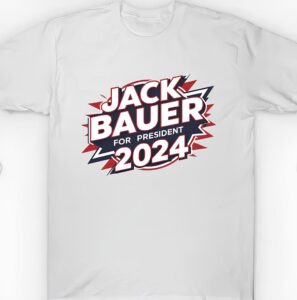CTU’s pivotal role in 24 extended far beyond fiction
Summary
– CTU’s dramatic depiction in 24 shaped post-9/11 perceptions of counter-terrorism
– The agency’s controversial tactics sparked lasting debates on security and ethics
– CTU’s influence extended to real-world public discourse, popular culture, and TV storytelling
The Counter Terrorist Unit (CTU) in FOX’s 24 was never just a narrative device or a backdrop for Jack Bauer’s heroics. From its 2001 debut in a country gripped by new fears, CTU became a touchstone for how American pop culture processed the terror and uncertainty of the era. The show’s creators timed its launch mere weeks after 9/11, making CTU a mirror for anxieties over national security and the evolving boundaries of government power.
CTU operated as a fictional federal agency modeled loosely on the CIA and FBI. Tasked with detecting and disrupting terrorist threats on U.S. soil, its jurisdiction bent the rules of reality for dramatic effect. The agency’s operations—focused almost entirely in Los Angeles—provided the springboard for each season’s real-time, day-long crisis. Through the lens of CTU, the series introduced millions to a world of urgent decision-making, political backstabbing, and the perpetual threat of disaster.
The real-time narrative, reinforced by the iconic ticking clock and split-screen storytelling, made CTU’s race against time the show’s heartbeat. Each episode’s hour-by-hour pacing and intersecting plot lines amplified the tension, inviting viewers inside the command center and out into the field. The series thrived on high stakes, rapid plot shifts, and a relentless parade of moles, traitors, and shifting loyalties within CTU itself.
Technological prowess defined CTU’s operations. Its staff wielded gadgets and surveillance systems that defied reality—flawless image enhancement, devices with unlimited power, and computer systems immune to bugs. This “technomagic” ensured that the narrative could sprint ahead, never pausing for the technical slowdowns that real-world agencies encounter. Yet, the agency’s advanced tools never seemed enough: plotlines repeatedly showed that even with the best tech, bureaucratic caution, or internal corruption could cripple efforts—until Jack Bauer defied the rules to save the day.
Jack Bauer’s relationship with CTU symbolized a core theme: the individual’s moral resolve versus the institutional process. Repeatedly, the show depicted new CTU directors or government officials who doubted Bauer’s judgment—only to be proven wrong as his willingness to cross ethical boundaries averted catastrophe. Through this device, the series raised questions about the reliability of bureaucracy and the necessity of “doing what it takes,” especially under pressure.
This perspective brought major ethical controversies. 24 became infamous for its frequent use of the “ticking time bomb” scenario, justifying the violation of civil liberties or the use of torture to prevent imminent disaster. Scenes of physical and psychological coercion—ranging from beatings to staged executions—were presented as practical tools in extraordinary circumstances. The show’s repeated resolution of ethical dilemmas in favor of immediate action and results shaped audience perceptions about the acceptability and necessity of such tactics. CTU’s frequent end-runs around constitutional safeguards, often driven by Bauer, fueled heated debates about the legitimacy of torture and the acceptable scope of government power.
Critics and academics debated 24’s impact on real-world attitudes. Some argue that the show “normalized” harsh measures and rendered them commonsense policy options. The series’ release in the shadow of 9/11 and its frequent depiction of Muslim antagonists also drew criticism for reinforcing negative stereotypes and aligning with a conservative political agenda. Attempts to balance this with sympathetic characters were limited and, for many, not fully convincing.
The show’s handling of women’s roles evolved, with later seasons giving female characters greater agency but still tying their heroism to their support of Bauer’s authority. Ultimately, the series favored the lone maverick’s judgment over the institutional process, reinforcing an ethos that individual intuition and moral clarity could override rules when the stakes were highest.
24’s cultural impact extended well beyond television. The series shaped and was shaped by public discourse on terrorism, civil liberties, and the moral ambiguity of national security. The “ticking time bomb” device became shorthand in policy debates. The Council on American-Islamic Relations and other groups challenged the show’s influence on perceptions of Muslims and U.S. policy. Producers claimed audiences could distinguish fiction from reality. Still, research and debate continued over whether 24 helped “reproduce” the logic of the War on Terror and “lower the threshold” for public acceptance of controversial measures.
The fictional CTU diverged sharply from real intelligence agencies like the CIA and FBI. Unlike the CIA’s exclusive focus on foreign intelligence or the FBI’s careful balance of law enforcement and intelligence within the law, CTU enjoyed extraordinary flexibility—routinely bypassing legal and procedural safeguards for dramatic effect. Legal codes, Congressional oversight, and constitutional limits bind real agencies. By contrast, CTU’s fast-paced action and occasional disregard for process highlighted the narrative power and potential risk of dramatizing “whatever it takes” attitudes, particularly when audiences are already primed for anxiety and suspicion.
CTU’s legacy, then, is twofold. It helped define 24’s unique style and pacing—making the real-time format work by placing viewers at the center of a never-ending emergency. But it also offered a vehicle for exploring, and sometimes amplifying, the darkest dilemmas of the War on Terror era. The agency’s flaws—internal betrayals, moles, and susceptibility to corruption—mirrored public doubts about the limits and fallibility of institutions. Meanwhile, the consistent triumph of Bauer’s extra-legal actions sent a powerful, sometimes troubling, message about the costs and benefits of trusting the process versus trusting the individual.
Ultimately, 24’s CTU is one of television’s most memorable agencies. It changed the look and feel of serialized drama, created space for serious debate about ethics and power, and remains a touchstone for discussions about the lasting cultural effects of the War on Terror.
How did a fictional agency shape public debates, inspire critical analysis, and influence the way we think about security, freedom, and the price of safety? CTU’s legacy is that it made those questions impossible to ignore.

